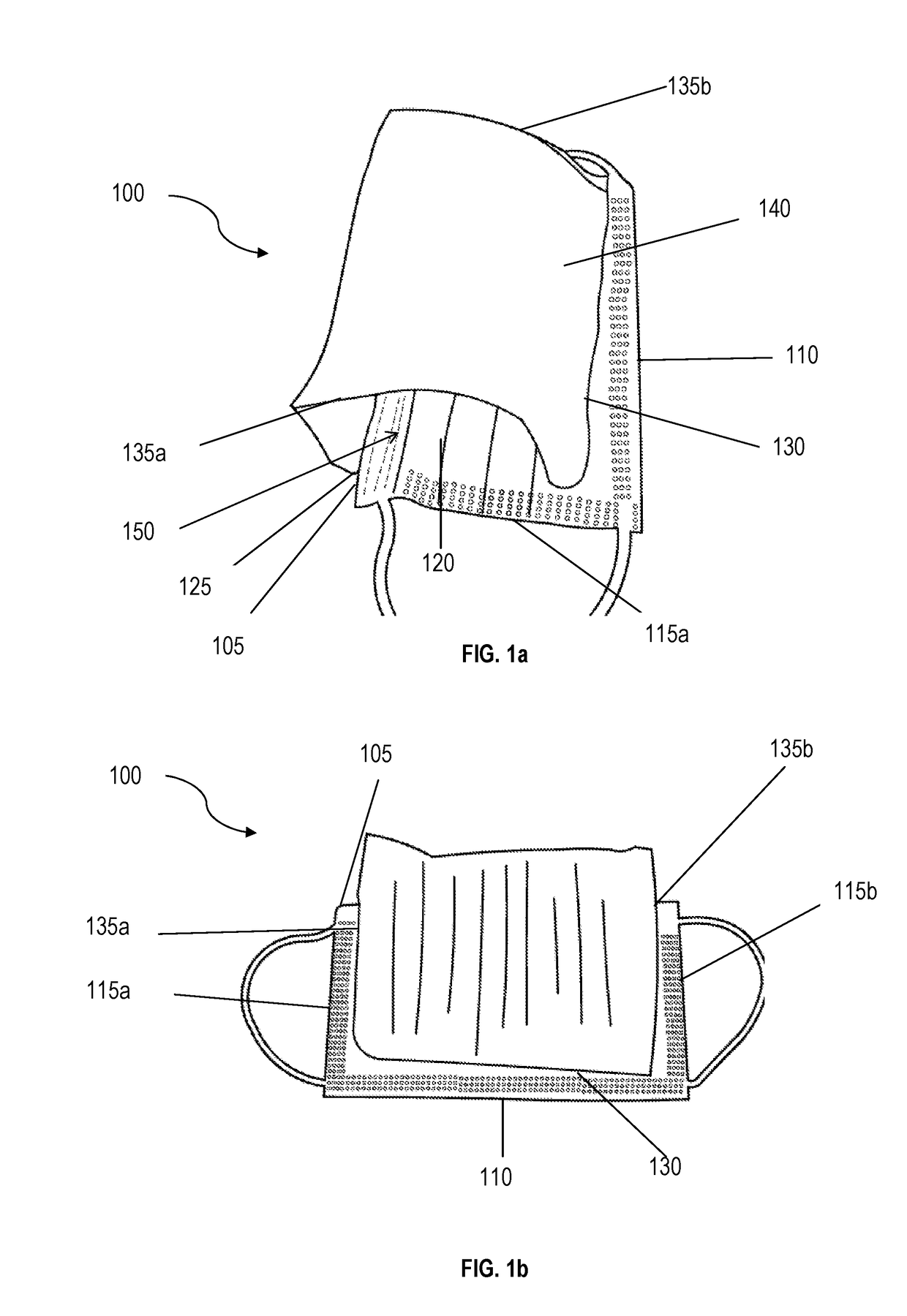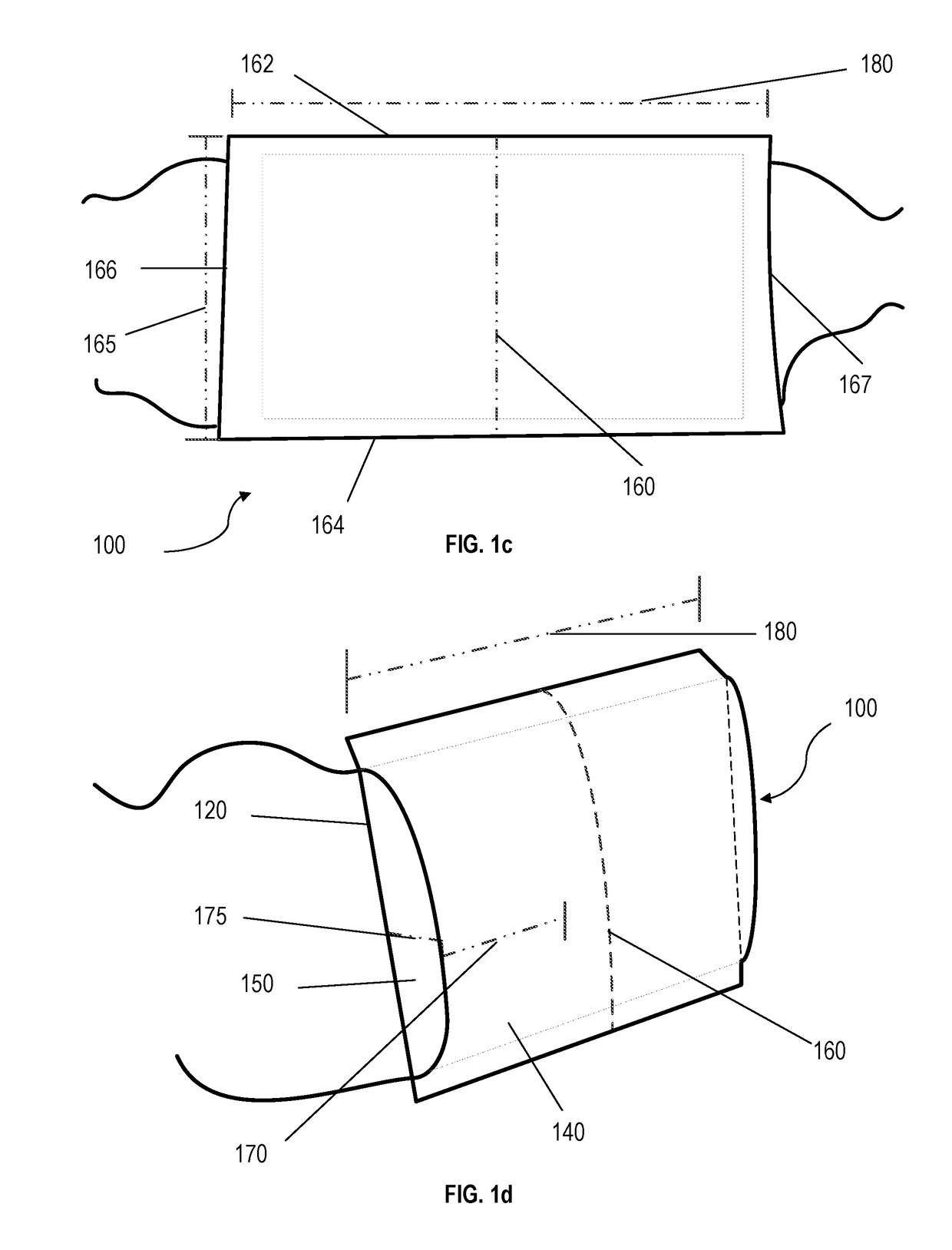Anti-Fog Ventilating Face Masks
a face mask and anti-fog technology, applied in the field of ventilating face masks, can solve the problems of fogging of the shield, warm, moist air escaping from the mask tends to condense on relatively cool surfaces, and achieve the effect of reducing relative humidity, reducing relative humidity, and reducing relative humidity
- Summary
- Abstract
- Description
- Claims
- Application Information
AI Technical Summary
Benefits of technology
Problems solved by technology
Method used
Image
Examples
example 1
Double-Mask Configuration
[0060]The efficacy of a mask-over-mask configuration in decreasing the relative humidity on a face shield was tested. Medical face masks were obtained from Medline Industries, Inc. The first mask was put on in a normal way, covering the nose, mouth, and part of chin, as illustrated at FIG. 7. The second mask was put on loosely with chin uncovered, as illustrated at FIG. 7. Additionally a face shield was worn over the face mask as illustrated at FIG. 7. An Omega RH30-C digital humidity meter was used to detect the humidity. The probe of the humidity meter was attached to the surface of face shield and about 1 inch away from nose, as shown in FIG. 7. The room temperature was 25° C., and the relative humidity in the room was 50.2%. Relative humidity measurements were taken at 2 minutes.
example 2
Ventilation Layer Configuration
[0061]Next, the efficacy of the ventilating face mask in decreasing the relative humidity on a face shield was tested. The ventilating face mask was put on and a face shield was worn over the face mask, as illustrated at FIG. 8. An Omega RH30-C digital humidity meter was used to detect the humidity. The probe of the humidity meter was attached to the surface of face shield and about 1 inch away from nose, as shown in FIG. 8. The room temperature was 25° C., and the relative humidity in the morn was 50.2%. Relative humidity measurements were taken at 2 minutes.
Results
[0062]After two minutes of wearing the mask-over-mask configuration and breathing, the relative humidity on the surface of the face shield was approximately 55.4% (C2=0.0123 kg / kg dry air). Additionally, no fogging was observed on the face shield. Wearing two medical face masks is easy and quick for a wearer to avoid fogging on the face shield, but it is a temporary approach. After two minu...
embodiment 1
[0065]A ventilating face mask comprising: a base layer having a top edge, a bottom edge, and side edges; a ventilation layer, external to the base layer, the ventilation layer comprising side edges and having a top edge attached to the top edge of the base layer and a bottom edge attached to the bottom edge of the base layer; and one or more ventilation gaps between the side edges of the base layer and the side edges of the ventilation layer.
PUM
 Login to View More
Login to View More Abstract
Description
Claims
Application Information
 Login to View More
Login to View More - R&D
- Intellectual Property
- Life Sciences
- Materials
- Tech Scout
- Unparalleled Data Quality
- Higher Quality Content
- 60% Fewer Hallucinations
Browse by: Latest US Patents, China's latest patents, Technical Efficacy Thesaurus, Application Domain, Technology Topic, Popular Technical Reports.
© 2025 PatSnap. All rights reserved.Legal|Privacy policy|Modern Slavery Act Transparency Statement|Sitemap|About US| Contact US: help@patsnap.com



